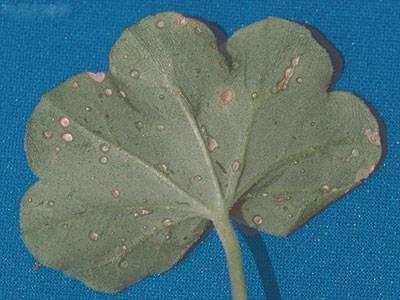Problems with excess water can result from poorly drained soil, prolonged periods of rain, or overwatering. Excess water reduces oxygen in the soil, which damages fine roots and renders the plant unable to take up water. Plants exposed to excess moisture show the same symptoms as plants under drought stress. The primary symptom of excess moisture is wilting or yellowing of lower and inner leaves. If excess water continues, plants may show other drought symptoms, such as scorch, leaf drop, and/or plant death. To avoid problems, select plants tolerant of moist soils or adjust watering practices to allow soil to dry between watering.
Edema (Oedema)
Is a physiological condition caused by excess moisture in the soil. Excess soil moisture combined with cool temperatures, overcast weather, and poor air circulation can cause a buildup of water pressure within the leaves. The water pressure causes cells on the lower leaf surface to rupture, which forms brown, corky, scab-like spots. These spots appear on the lower leaf surface and are also visible from the upper leaf surface. Edema stops developing when the weather conditions change, but existing spots remain on the leaves. Prevent edema by allowing the top 2 inches of soil to dry between watering and space plants to allow for sufficient air circulation. Edema is a common problem on ivy geraniums. Ivy geraniums may also occasionally develop edema as a result of two-spotted spider mite infestation.

